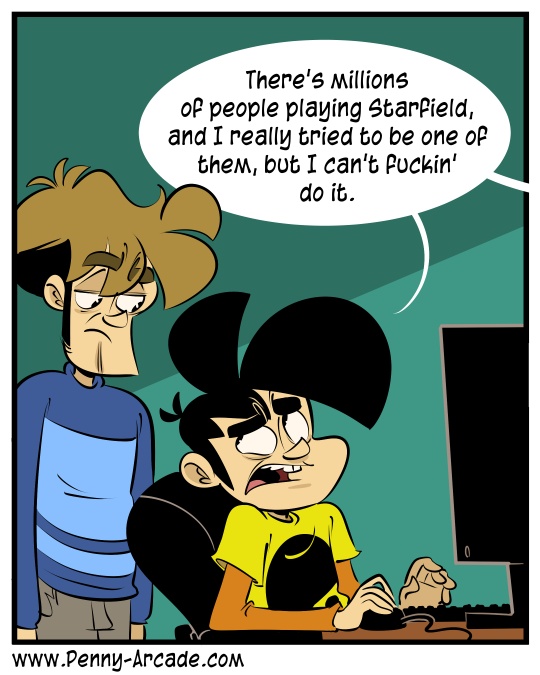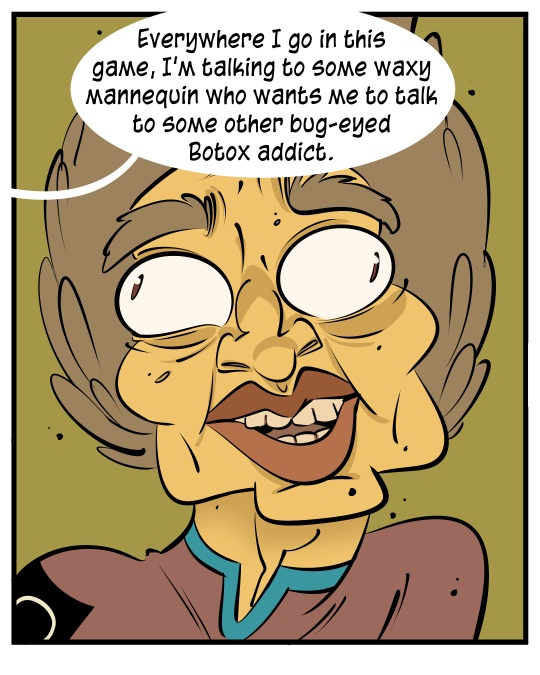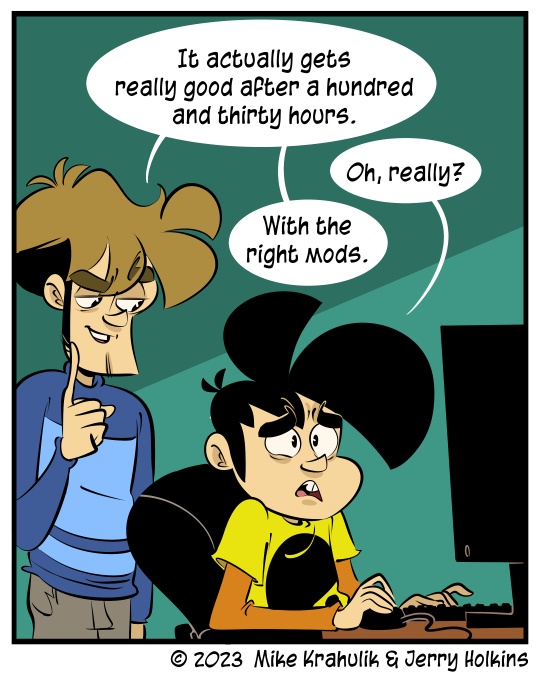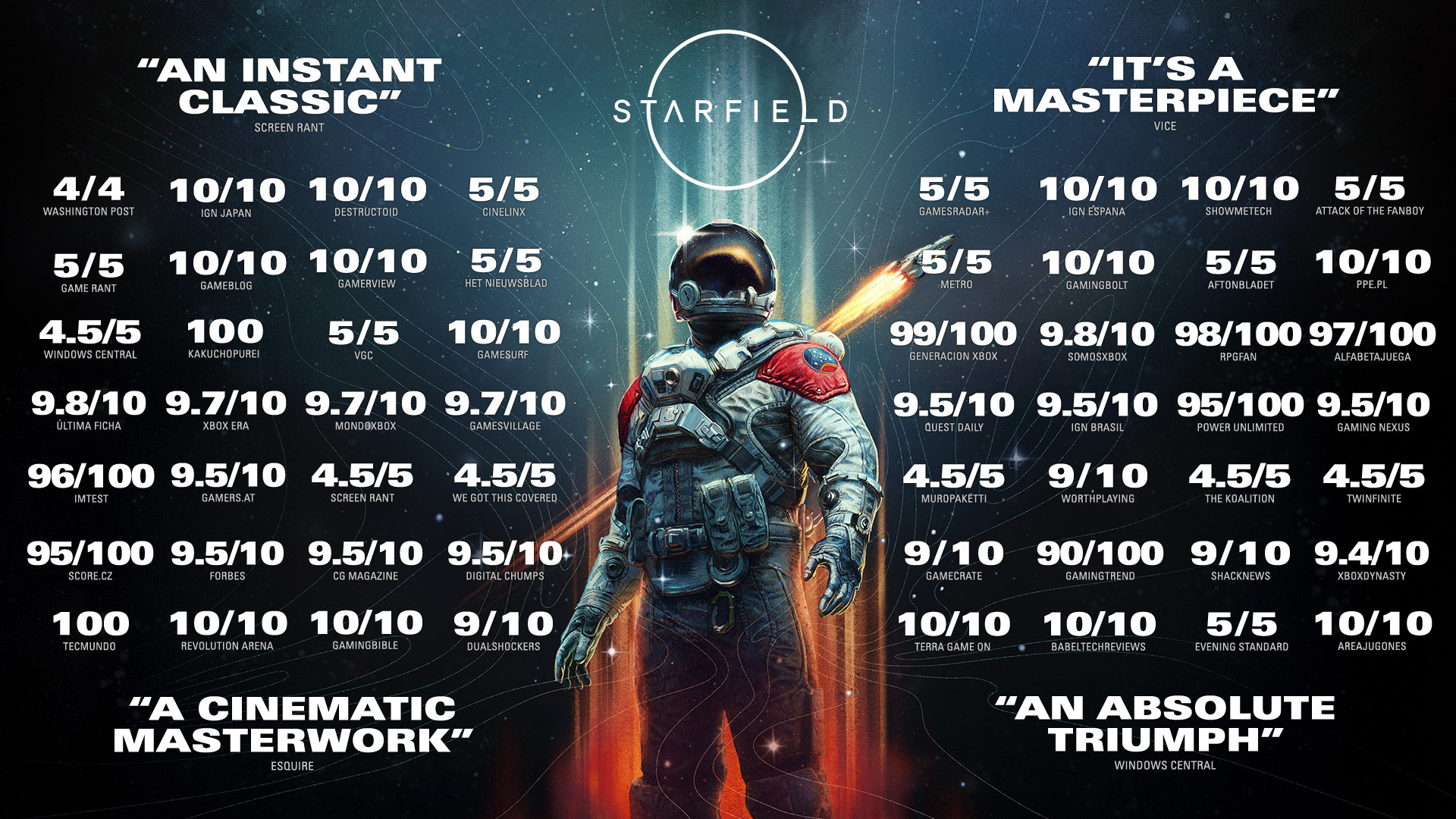A ‘Starfield’ post-mortem with Todd Howard and Phil Spencer
I’m the interviewer, but legendary game creator Todd Howard was looking like he had questions for me.
It turns out I’m the first person he’s spoken to outside his workplace who’s played and finished the video game he’s
dreamed of making for the last quarter of a century. It’s called “Starfield,” developed by Bethesda Game Studios in Rockville, Md., and published under Microsoft’s Xbox brand.
Expectations for the project have been astronomical thanks to the pedigree of the studio’s past titles and that it’s the company’s first new intellectual property in almost 30 years. Fans have whispered about the title “Starfield” in gaming forums and discussions since it was trademarked in 2013. For years, it felt mythical. On top of that, it’s saddled with the burden of being a marquee title for Xbox, a successful platform that nevertheless has a smaller market footprint in the global games industry.
This month, “Starfield” became real. And Howard wants to know what we all think.
“I haven’t talked to anybody who’s finished it, so I’m fascinated by your experience,” Howard tells me.
Howard seems nervous about the reception, but the game appears to be a success so far. During its week of early access with 6 million players, “Starfield” is already the most-played Xbox-exclusive game this console generation, according to Xbox. It’s the Xbox game on the most wish lists ever on the Steam marketplace. And it broke the record for the most pre-installed game since the 2017 start of Microsoft’s games subscription service, Xbox Game Pass.
“Starfield” is a milestone in Microsoft’s strategy to become a universal gaming platform across various methods of distribution, through the cloud, PC or the Xbox series consoles. Game Pass, billed as a Netflix-like disruptor service for gaming, last year reported 25 million subscribers, and “Starfield” is aimed to boost those numbers.
Microsoft
acquired Bethesda parent company ZeniMax Media in 2021 for $7.5 billion with hopes to buttress its subscription service with exclusive quality titles. Howard and Phil Spencer, the head of Xbox, say the partnership is a natural fit, especially since the studio has worked closely with Xbox in the past.
“It’s been a while since we launched anything of this scale that’s single player,” Spencer tells The Washington Post in an interview. “It’s kind of a pin for us in our strategy that we can do big multiplayer games and single-player games. The business models that we have in Xbox and the places where we ship allow us to find millions of players.”
A key to Microsoft’s game strategy
Microsoft is recently closing up its historic $69 billion acquisition of Activision Blizzard, publisher of the Call of Duty and Candy Crush games, after a federal judge
rejected a Federal Trade Commission lawsuit that alleged the deal was anti-competitive. This aggressive expansion is not just to stay competitive with Nintendo and Sony PlayStation, but also to stave off other tech giants who have been trying to enter the enormously lucrative video games industry.
Spencer says the deal is Microsoft’s attempt to establish more open standards in gaming.
Head of Xbox Phil Spencer, left, meets German official Robert Habeck at the Gamescom video game fair in Germany. (Ina Fassbender/AFP/Getty Images)
“I spent a lot of time thinking about how the game industry is going to grow, and my view is that it grows if there’s less friction of a player anywhere wanting to find their game, and closed platforms create real barriers to that,” Spencer said. He admitted Xbox has its own walled-off content (“Starfield” is not available on PlayStation, for example), but said he’s working to change that.
Xbox is still focused on expanding its game services while its rivals race ahead in film and television. This year Nintendo and Sony have
expanded their intellectual property to include “The Super Mario Bros. Movie,” which earned more than $1.3 billion at the global box office, and the 24-time Emmy-nominated HBO series “The Last of Us.” Spencer admits Xbox is still “earlier in our journey” to squeeze its brands in other spaces.
“We don’t have the deep expertise that Sony obviously has from their movie studios that make world-class video content, and Nintendo did a great job obviously,” Spencer said. “I do think it’s important for these worlds we’re creating in games. We used to have a lot of envy in our industry of Hollywood and what they created, then you see comics kind of take over, and now you’re going to see video game stories continue to grow in importance because our creators are as capable as creators of any medium.”
Designing an interconnected world
Ask anyone in the games industry, and they’d point to Howard as one of those capable people. Bethesda Game Studios’ entries in the post-apocalyptic “Fallout” franchise catapulted the series from a niche computer role-playing game into a mainstream, multimillion dollar franchise.
A “Fallout” show is in the works for Prime Video. (Washington Post owner Jeff Bezos is the founder of Amazon, which owns Prime Video.)
Howard and his teams like to create games that form backdrops for countless other stories. “Starfield” has a thousand explorable planets, including an Earth with a surface blasted by some mass annihilation event. I landed my ship in the D.C. area with hopes to find the nuclear wasteland from “Fallout 3” — to no avail.
Howard laughs. “We talked about it.”
Visitors queue for the game “Starfield” at the Xbox booth during the Gamescom gaming convention in Cologne, Germany in August. The game is the most eagerly anticipated title for Xbox platforms in decades. (Friedemann Vogel/EPA-EFE/Shutterstock)
It was just one of hundreds of plans that didn’t quite make it into the game. Howard said it was a challenge to make sure the studio’s technology could keep up with its ambition.
“Oh, we planned, and those plans went out the window,” Howard said. “We knew we were going to rewrite parts of the engine, so we started building technology for the planets and the outer space stuff on our previous engine and renderer.” Eventually they realized they had to port years of work to a new engine. And then the pandemic hit.
Howard said working from home made production “very, very slow,” especially since the studio was going to overhaul all of its technology with lots of already finished art assets. The game was initially scheduled for a 2022 release, but that May, the studio announced a delay into this year.
When Bethesda chose the original November 2022 release date, “we had lots of buffer and we felt really good about it,” Howard said. “As things moved on, we were off by a percentage, and a percentage when it comes to the scale of this game turns out to be a lot of time. We felt it was the right thing to do to give us the time we required.”
Howard seems particularly pleased at how the game’s main quest comes together. So our conversation returns to my thoughts on the main storyline. I tell him the same thing I wrote in my review:
This is the studio’s best main questline. The appeal of a Bethesda-made role-playing game is that players can inhabit large worlds and simply exist in them, partaking in activities like building houses or farming between countless storylines scattered across a map. These games are notorious for having so many things to do a player may simply ignore the central quests — which, critics and players often agree, aren’t exactly the highlight of these games anyway. So it was surprising to see how much production and planning went into the main quest of “Starfield.”
“We started with the themes and the ending,” Howard said. “We started early on where the theme and the long-term play of the game was built into the story. Those two things are fused together.”
Howard said “Starfield” made him think about the nature of video games and why people play them. Video games are usually a power fantasy, and even in Bethesda games, that fantasy is often achieved with finding a better weapon, getting stronger or having more money. “Starfield” is meant to challenge that notion.
If video games are wish fulfillment, the story of “Starfield” aims to fulfill an ancient human fantasy: Given all the experience and wisdom you’ve attained since birth, would you do it all again?
“Usually in a video game, you go on to the next quest or the next thing. But if it challenges to say, ‘Are you sure?’ I find that an interesting idea as it applies to a game,” Howard said. “We do ask a lot of questions throughout the main quest and we don’t provide all the answers. We want you to look inside yourself. How do you feel about the choices you’ve made? How do you feel about everything you’ve learned and built up, and would you do it again if given the choice?”
The legacy of “Starfield” has yet to be written. It’s the latest in a long line of video games about space.
“Spacewar!” in 1962 was developed in an MIT lab and can be called the grandfather of the video game medium. It was followed by games like “Space Invaders,” “Galaga” and “Asteroids.” I asked Howard if that legacy weighs on him.
“That is an excellent observation, and I think I’ve done enough interviews for this game and no one’s mentioned that, so I appreciate that,” Howard said.
“Growing up with video games at a very young age, there were a lot of space games … there was ‘Star Raiders’ from Atari, ‘Elite’ comes along, there were some role-playing games that I really love, ‘SunDog,’ which no one remembers but was way ahead of its time. People were playing Dungeons and Dragons but I really loved this game ‘Traveller.’ Still have the original boxes in my office.”
For Howard, “Starfield” is born of a wish to play space-faring adventures with the modern technology and design language of video games.
“It’s something we always talked about here. A few years in, we figured out why people try and stop or don’t want to do it all the way,” he said. “But we are in a fortunate position to have the support and time to do it.”


































